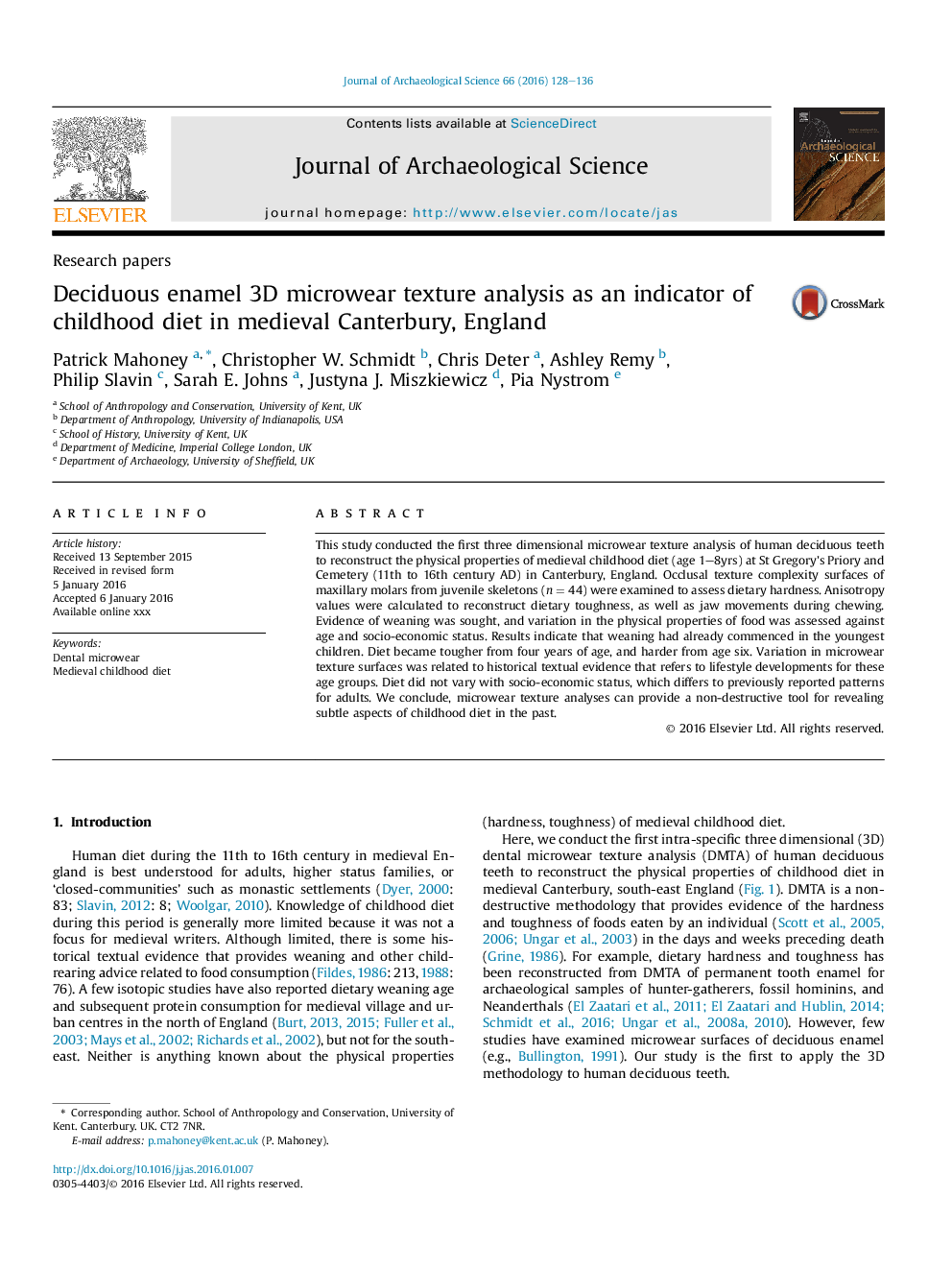| Article ID | Journal | Published Year | Pages | File Type |
|---|---|---|---|---|
| 7441578 | Journal of Archaeological Science | 2016 | 9 Pages |
Abstract
This study conducted the first three dimensional microwear texture analysis of human deciduous teeth to reconstruct the physical properties of medieval childhood diet (age 1-8yrs) at St Gregory's Priory and Cemetery (11th to 16th century AD) in Canterbury, England. Occlusal texture complexity surfaces of maxillary molars from juvenile skeletons (n = 44) were examined to assess dietary hardness. Anisotropy values were calculated to reconstruct dietary toughness, as well as jaw movements during chewing. Evidence of weaning was sought, and variation in the physical properties of food was assessed against age and socio-economic status. Results indicate that weaning had already commenced in the youngest children. Diet became tougher from four years of age, and harder from age six. Variation in microwear texture surfaces was related to historical textual evidence that refers to lifestyle developments for these age groups. Diet did not vary with socio-economic status, which differs to previously reported patterns for adults. We conclude, microwear texture analyses can provide a non-destructive tool for revealing subtle aspects of childhood diet in the past.
Keywords
Related Topics
Physical Sciences and Engineering
Materials Science
Materials Science (General)
Authors
Patrick Mahoney, Christopher W. Schmidt, Chris Deter, Ashley Remy, Philip Slavin, Sarah E. Johns, Justyna J. Miszkiewicz, Pia Nystrom,
